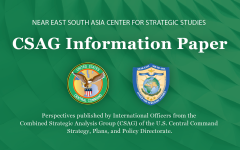Does the Appetite to End the Conflict in Yemen Exist?
March 11, 2022 2022-03-11 16:37Does the Appetite to End the Conflict in Yemen Exist?
By: LTC Madalin Iordache, ROU Army, CSAG CCJ5
09 Feb 2022
Introduction:
On September 24th, 2014, the Houthis rebels, endorsed by former president Ali Abdullah Saleh and his loyalist forces, seized control of the historic Yemen capital Sana’a and overthrew the government of Abdo Rabbu Mansour Hadi, the president at the time. It is the milestone that triggered the transition from the deep crisis in which Yemen was struggling with ever since the Arab Spring to the civil war that has been crushing the country since then.
Seven years later, the parties involved in Yemen’s conflict must choose between accepting a ceasefire and an imperfect political settlement or continuing a war that will result in more human suffering but no clear nationwide military victory for any group. A political compromise between the internationally recognized government and the Houthis — the de facto authority in Sana’a – might have ended the conflict and ushered in a period of political change. However, developments in the military balance, political and territorial fragmentation, and heavy-handed regional engagement have transformed the prerequisites for peacekeeping. A more inclusive UN-mediated multiparty solution is required, as well as interim governance mechanisms that prevent power recentralization in Sana’a in favor of just one or two parties. This paper will first identify the main actors involved in the conflict and then will examine their attitudes regarding a potential peace agreement.
Key Points:
- The Houthis have evolved into a genuine state, and they are more interested in maintaining the status quo rather than engaging in negotiations to resolve the conflict.
- Even though the United Nations and the regional countries recognize Hadi as Yemen’s rightful president, the six-year exile in Riyadh has weakened his legitimacy in the eyes of many in Yemen’s grassroots movement.
- Yemen appears to be a disintegrated country which is unlikely to be reassembled as a single state after seven years of war.
- The appearance of several “islands” dominated by armed actors with loose chains of command and fluid loyalties complicated the math of achieving peace, which is no longer a two-part deal, between the Houthis and the IRGY.
- The US policy change regarding Yemen conflict did not reach the predicted results.
- The UN and the US do not have influence over all main parties involved in conflict, which is the major obstacle in reaching a peace agreement.
The opinions and conclusions expressed herein are those of a number of international officers within the Combined Strategic Analysis Group (CSAG) and do not necessarily reflect the views of United States Central Command, not of the nations represented within the CSAG or any other governmental agency.



